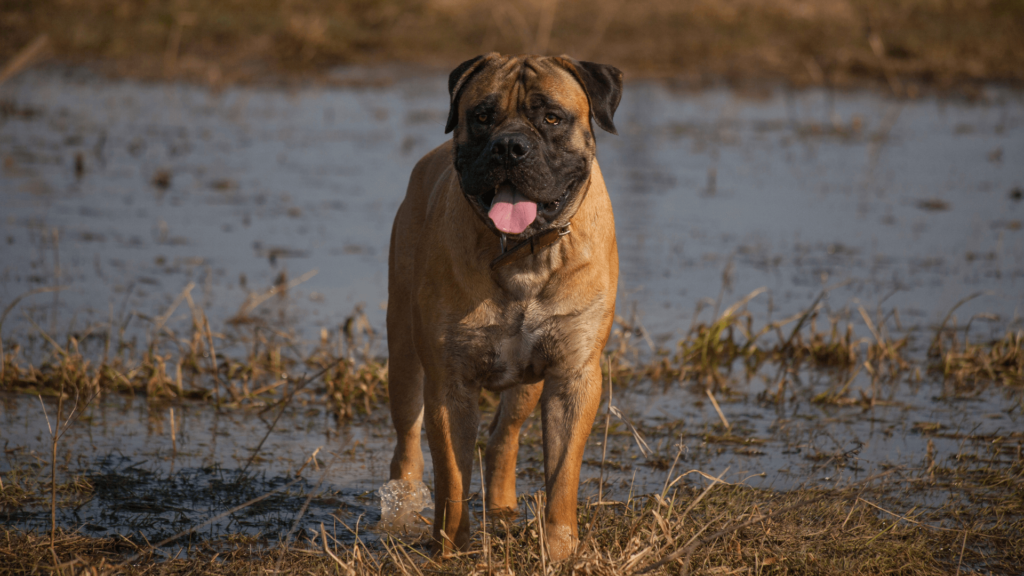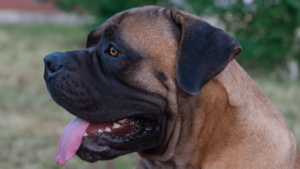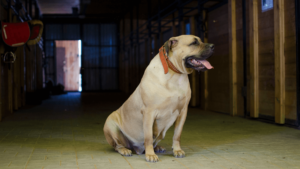Discover the Mighty Boerboel: A Guide to the Majestic South African Mastiff

Origins of the Boerboel
The legacy of this majestic canine dates back to the mid-1600s in South Africa, where it was developed by Boer farmers in search of a loyal and powerful guardian. Dubbed the Boerboel, derived from the Afrikaans word boer meaning farmer, this breed was specially bred for its size, strength, and agility.
Through the centuries, the Boerboel has become an icon of South African heritage, still recognized today as one of the most impressive and dependable breeds.
The South African Mastiff, also known as the Boerboel, is steeped in the culture and history of the people of South Africa. Not only were these dogs employed as guardians and protectors of the homesteads, but they were also kept as beloved pets and companions.
Their vast stature and intimidating appearance helped to ward off any potential danger, while their devoted and gentle nature made them a hit with the families. Nowadays, the Boerboel is still cherished for its unconditional loyalty and its vital role in the past of South Africa.
Characteristics of the Boerboel
A remarkable breed, the Boerboel stands out with its unique set of characteristics. Possessing an impressive size and muscular build, these dogs have a commanding presence and agility to match. Boerboels are protective guardians, instinctively guarding their family and territory. This breed is also known for its intelligence, and easy learning tasks and activities.
The Boerboel possesses a distinctive appearance, boasting a square-shaped head with a strong jaw and broad muzzle. Their eyes are alert and expressive, and their short, dense coat protects varying weather conditions.

Colors of brown, brindle, and fawn are common. Additionally, Boerboels are loyal and devoted to their family, being affectionate and gentle with their loved ones, yet cautious and reserved around strangers. With its impressive traits, the Boerboel makes an ideal choice for those seeking a dependable and trustworthy companion.
History of the Boerboel
Deep in the heart of South Africa, the history of the Boerboel is deeply embedded in the rich culture of the region. Since the mid-1600s, when European settlers arrived, these majestic animals were bred to work on farms. Their strength and fearlessness earned them a reputation as reliable guardians, and soon the Boerboel was greatly valued by landowners.
As the years progressed, these dogs became indispensable for travelers and explorers venturing into the wild African landscape. Boerboels provided security in dangerous circumstances, and their unwavering loyalty made them invaluable companions.
The Boerboel's courage and determination were also prominent during South African wars and conflicts. Soldiers found these dogs' imposing size and formidable strength to be a great asset in battle. For their part in helping to secure the nation's freedom, the Boerboel was rightfully honored.
Today, the Boerboel is still a beloved and treasured family member. Though their role has changed over the years, their heritage is still evident. Understanding the history of the Boerboel allows us to honor them for their remarkable character and legacy.
Uses of the Boerboel
Boasting immense size and physical power, this breed is incredibly versatile and can be used for many purposes. Primarily, Boerboels make excellent guardians and protectors, as they were bred specifically for this purpose.
Demonstrating unwavering loyalty and an instinct to safeguard their families and properties, their imposing stature makes them great at deterring trouble. Additionally, they are known for their intelligence and trainability, allowing them to take on roles such as search and rescue, police work, and even therapy. With their protective instincts, size, and strength, they are well-suited for a variety of working tasks.
Beyond their defensive capabilities, Boerboels make fantastic companions and pets. Despite their powerful appearance, they have a gentle and affectionate nature. Bonding strongly with their human companions, these dogs are devoted and loyal, requiring human interaction to thrive.
With proper socialization and training, they can be patient and gentle with children, making them great family pets. Furthermore, their calm and steady temperament makes them great for therapeutic roles, providing comfort and support to those in need.
All in all, the Boerboel's remarkable qualities and versatile nature make it a superb breed for various uses.
Personality and Temperament of the Boerboel
The loyalty and devotion of the Boerboel make it an extraordinary breed. These canines create an unbreakable bond with their families and will go to great lengths to protect them. This protective nature is deeply rooted in their genealogy, stemming from their former role as watchdogs of South African homesteads.
Of course, it is paramount to ensure that these dogs are properly socialized and trained so that their defense can be channeled in the right direction. When these majestic creatures are nurtured in a loving environment, they are capable of demonstrating a gentle and loving character, making them a great companion for the right owner.
Despite their imposing stature, Boerboels are not aggressive by default. They typically demonstrate a calm and collected attitude but may act reserved around strangers. This guard-like attitude is indicative of their discerning nature as protectors, as they can be cautious in the presence of unfamiliar people.
Early socialization and introduction to a variety of people and settings can help the Boerboel learn to be friendly and accepting. To ensure that the dog develops a balanced and rounded personality, it is important to commence training and socialization at a young age.
The intelligence and malleability of the Boerboel are other remarkable traits of this breed. They possess problem-solving skills and can easily pick up new commands and tasks. These dogs require regular physical exercise to stay sharp and need mental stimulation to keep them engaged.
With the right guidance, Boerboels can achieve success in various activities such as obedience, agility, or even therapy. Their eagerness to please and versatility make them highly trainable, however, it is essential to use positive reinforcement techniques and maintain a firm yet gentle approach to training.
Proper Care and Training of the Boerboel

To ensure the well-being and contentment of your majestic canine, both proper care and training are essential. Exercise is a significant factor in sustaining their physical health and providing mental stimulation.
Taking them out for walks regularly, allotting them playtime in a securely enclosed area, and supplying them with interactive toys are excellent ways to meet their exercise needs. Besides, a balanced diet that corresponds to their age, size, and activity level is necessary for their overall health. Vet visits for check-ups, vaccinations, and preventive care should also be scheduled routinely.
The Boerboel is an intelligent breed that responds best to positive reinforcement and consistency when it comes to training. Introducing them to a variety of people, animals, and surroundings from a young age is crucial for their socialization and to help them grow into obedient companions.
Starting with basic obedience commands like 'sit', 'stay', and 'come' is advisable. As they age, more advanced training such as a leash and off-leash exercises can be initiated.
Due to their protective temperament, it is crucial to train them properly to avoid any potential dominance or aggression issues. Establishing yourself as their leader through consistent and firm leadership is essential.
Positive reinforcement techniques, like rewards and praises, work best with this breed as they are encouraged by such positive attention. Avoid utilizing harsh or punitive training methods as they can potentially ruin the bond between you and your canine. For successful training, a patient, consistent, and assertive attitude is required.

Leave a Reply